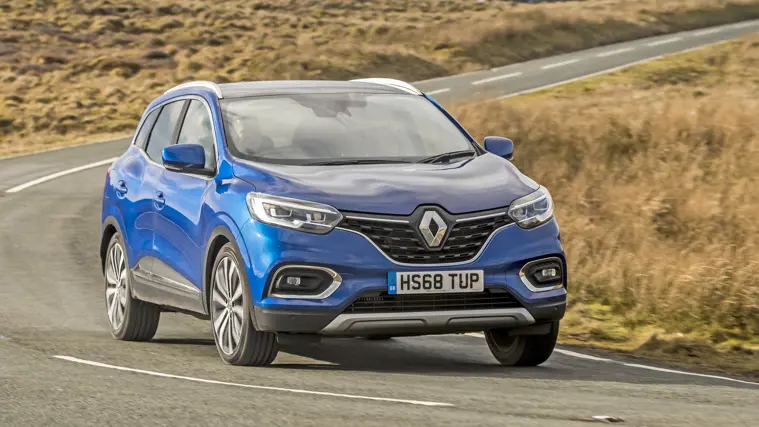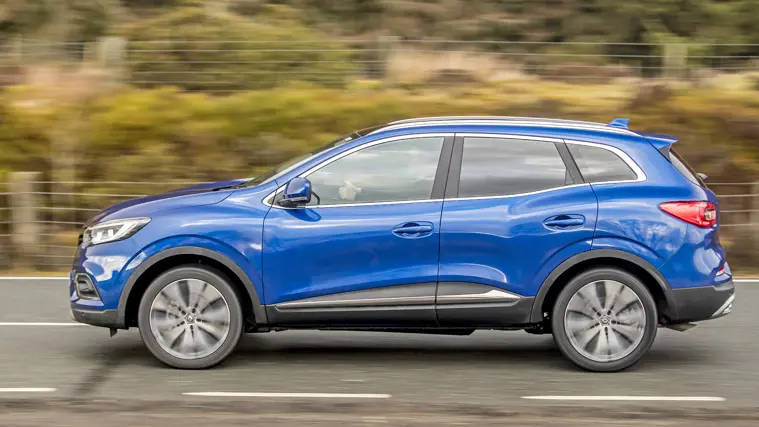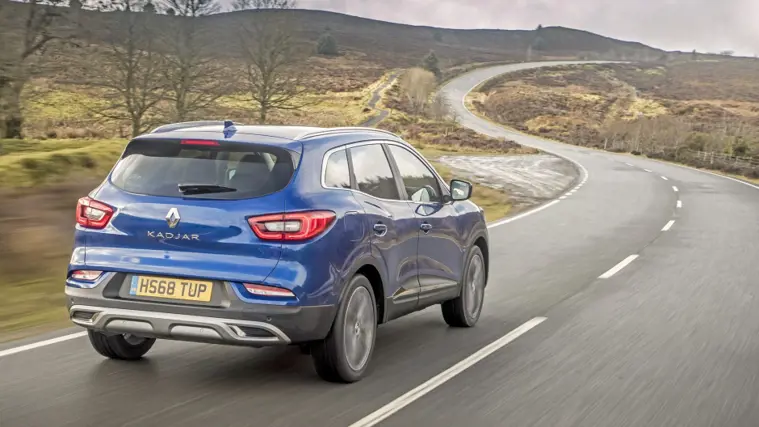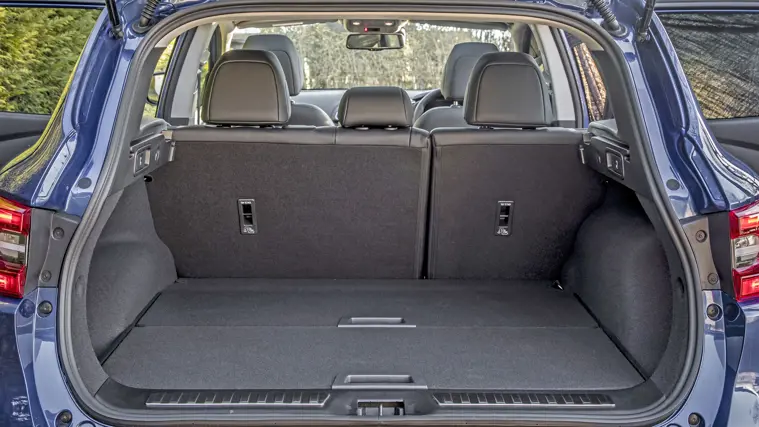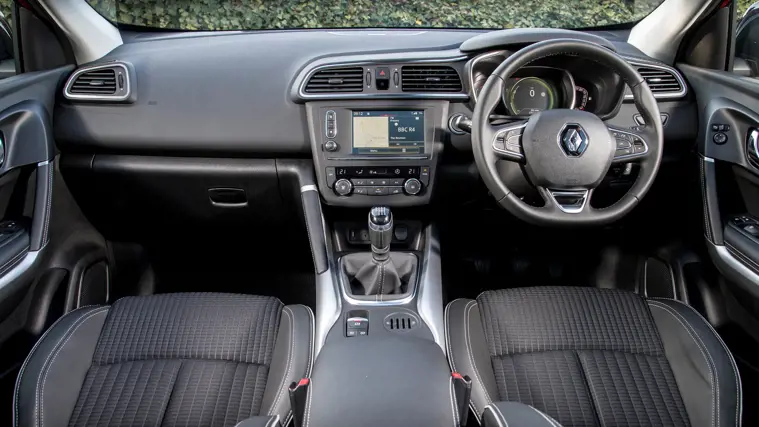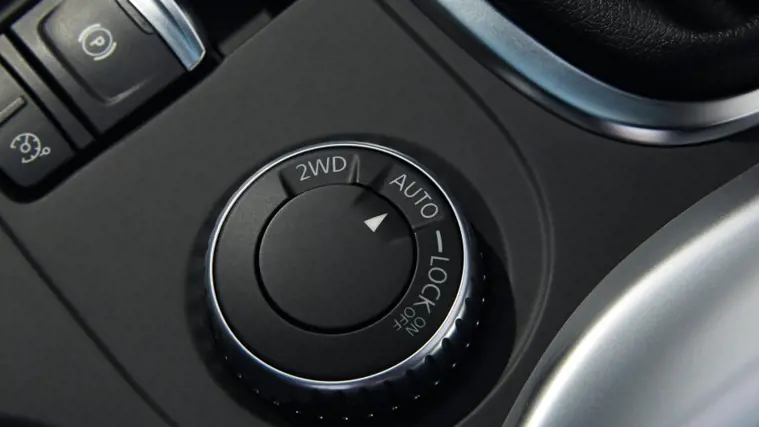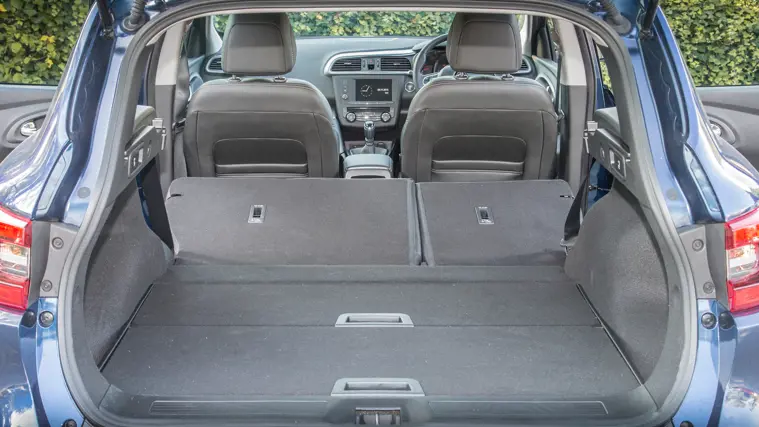Renault Kadjar (2015-2022) Review
Renault's Kadjar, the French equivalent of the Nissan Qashqai, excels at family life
Strengths & weaknesses
- Cheaper than most rivals
- Fresh styling - no frumpy family car looks
- Good to drive and comfortable on British roads
- Narrow engine range
- Limited off-road ability
- Loses value a little faster than some rivals
Renault Kadjar prices from £8,368 Finance from £177.21 per month
The Renault Kadjar is a perfect example of the benefits of choosing a crossover, which combines the high driving position and practicality of an off-roader with the greater affordability and easy drive of a conventional hatchback.
In terms of popularity, the Kadjar lags behind the sales powerhouse that is the Nissan Qashqai, but we believe the Renault is the better choice all things considered. They both share a majority of engineering elements by virtue of Renault and Nissan's partnership, but the Kadjar is 70mm longer, which opens up a surprising amount of space for passengers and luggage.
Adults should be comfortable in the back on long journeys, although headroom is a bit tight for taller occupants. Meanwhile, the 472-litre boot can accommodate a large buggy and shopping with ease where a Qashqai would struggle.
It's available with four-wheel drive, but this only serves to improve grip in poor weather conditions rather than turning the Kadar into a full-blown off-roader, because it doesn't have a particularly elevated ride height to traverse harsh terrain. If you're looking for a more capable off-road machine, you'd be better off opting for something like a Jeep Renegade at this kind of price.
In terms of quality, the fact the Kadjar is relatively cheap is reflected in its comparison to more upmarket alternatives such as the Volkswagen Tiguan or Peugeot 3008. Both of these offer step up in interior quality, the VW feels solid while the Peugeot offers more tech, and both are arguably more fun - and more comfortable - to drive, although the Kadjar rides surprisingly smoothly for a tall crossover with good levels of grip and precise steering.
The Kadjar has two sets of Isofix points in the back for securely attaching child seats and was awarded a full five stars for safety from the independent crash testers at Euro NCAP. For optimum safety, only the top-of-the-range Signature S car is available with optional automatic emergency braking.
Key facts
| Warranty | 3 years / 60,000 miles |
|---|---|
| Boot size | 472 litres |
| Width | 2058mm |
| Length | 4449mm |
| Height | 1607mm |
| Tax | £145 to £205 in first year, £145 thereafter |
Best Renault Kadjar for...
Best for Economy – Renault Kadjar 1.5 dCi 110 Expression+
This entry-level diesel emits just 99g/km of CO2, so is exempt from road tax for models registered before 1 April 2017. Its official fuel economy figure is a frugal 74.3mpg.
Best for Families – Renault Kadjar 1.6 dCi 130 Dynamique Nav
The more powerful diesel engine enables smoother motorway overtaking and is good for towing. The Dynamique Nav trim level ensures there's a useful sat-nav fitted as standard.
Best for Performance – Renault Kadjar 1.6 dCi 130 Signature Nav
You couldn't really describe it as sporting, but the 1.6-litre diesel engine is the quickest available in the Renault Kadjar. Signature Nav trim comes with LED headlights for better night-time visibility.
One to Avoid – Renault Kadjar Signature S Nav TCe 130 EDC
Top-of-the-range Signature S models are expensive and the high levels of CO2 and poor mpg figure make it expensive to run.
History
- September 2015 The first Renault Kadjars are delivered to customers.
- April 2016 Renault Kadjar Signature S Nav top-of-the-range trim level launched,with rear parking sensor and leather seats as standard.
- April 2016 A new smoother 7-speed automatic gearbox is available with the TCe 130 petrol engine.
- April 2017 Apple CarPlay and Android Auto added to new cars with the R-Link 2 dashboard display.
- September 2017 More powerful TCe 165 petrol engine and efficient X-Tronic automatic gearbox (a CVT design) introduced. Hands-free keycard upgraded so car locks automatically when you walk away.
- February 2018 Renault reduces its warranty from 4 years or 100,000 miles to 3 years or 60,000 miles
- April 2018 Kadjar Dynamique SE Nav special edition launched, with panoramic sunroof, side steps and rear parking camera in addition to Dynamique S spec.
Understanding Renault Kadjar names
Engine 1.5 dCi 110
Engine size is given in litres (here it's 1.5). Smaller engines are often - but not always - more economical. dCi is the label used on diesel Renault Kadjar models; the petrol engine is labelled TCe. The engine's horsepower is also shown - this may be labelled as PS.
Trim Dynamique Nav
There are six trims in total (Expression+, Dynamique Nav, Dynamique S Nav, Dynamique SE Nav, Signature Nav, Signature S Nav). Each higher level means more equipment and a larger price. If the trim has Nav in its name, sat-nav is standard.
Gearbox EDC
A 6-speed manual gearbox is offered across the range. Some automatic gearboxes are labelled EDC, which means that they have two clutches for quicker and smoother gearchanges. There's also a different type of automatic, called X-Tronic. This is a CVT gearbox, which works in a different way - without fixed gears. It's smooth and efficient during steady driving, but slower to react when accelerating.
Driven wheels 2WD
Standard two-wheel drive cars are rarely badged 2WD but four-wheel drive versions are labelled 4WD.
Renault Kadjar Engines
Petrol: TCe 130, TCe 165 Diesel: dCi 110, dCi 130
Choosing an engine for your Renault Kadjar is fairly simple, as there’s a limited selection. The 1.2-litre TCe petrol is nippy and will perfectly suit those living in busy towns and cities with plenty of short hop commutes. You can choose it with Renault's new 7-speed automatic gearbox, which is said to be smoother than the 6-speed version available with some diesel models. It's not the most frugal engine on offer and you can only expect around 35mpg in real-world driving.
Fuel economy isn't a strength of the more powerful TCe 165 motor either, although it's actually little different to the smaller and cheaper petrol option: real-world fuel economy is similar and it doesn't feel much faster, so it's hard to justify the extra cost.
Despite the reducing appeal of diesel, it's a good choice for the Kadjar if you drive more than 10,000 miles a year. Fuel economy is dramatically better: you can expect around 54mpg in normal driving from the dCi 110 with a manual gearbox, and 50mpg from the fast-shifting automatic. The engine is smooth and feels powerful, even at motorway speeds. It is a bit noisy, though.
The more powerful 1.6-litre dCi 130 diesel engine is best for towing and offers improved acceleration for faster overtaking. It’s also worth considering if you live in a remote area that can experience treacherous driving conditions, as this engine can be combined with four wheel drive. This is available with a different automatic gearbox called X-Tronic. This is a type known as CVT, which doesn't have fixed gear ratios. It's efficient but slow to react when you want to accelerate hard.
|
Fuel |
Official fuel economy |
Power |
Acceleration (0-62mph) |
Top speed |
|
|
TCe 130 |
Petrol |
50.4mpg |
130hp |
10.1 secs |
119mph |
|
TCe 165 |
Petrol |
47.1mpg |
163hp |
9.2 secs |
127mph |
|
dCi 110 |
Diesel |
74.3mpg |
110hp |
11.9 secs |
112mph |
|
dCi 130 |
Diesel |
65.7mpg |
130hp |
9.9 secs |
118mph |
Renault Kadjar Trims
Expression+, Dynamique Nav, Dynamique S Nav, Dynamique SE Nav, Signature Nav, Signature S Nav
Renault offers a decent amount of standard equipment in in the Kadjar: you get more for your money than with the Nissan Qashqai but it doesn’t offer all of the high-tech features that the Nissan does - such as the 360-degree cameras system, which gives the driver a bird’s-eye view around the entire car.
Entry-level Expression+ models come with air conditioning, a digital speedometer, cruise control, a speed limiter and all-round electric windows. There's a digital radio and Bluetooth for connecting your phone wirelessly, but no dashboard screen.
All drivers receive hill start assist, which automatically applies the brakes to prevent the Renault Kadjar from rolling backwards in awkward hilly traffic conditions. Standard safety equipment includes numerous airbags and two sets of Isofix points for child seats in the back seats. This version of the car can't be fitted with Renault's automatic braking system, which can prevent, or reduce the speed of, crashes.
Step up to Dynamique Nav and you will get a seven-inch touchscreen display with TomTom Live navigation as standard, along with a more powerful sound system with 3D sound functionality. These cars also benefit from stylish 17-inch alloy wheels - as opposed to the smaller 16-inch steel wheels found on Expression+ models - as well as fog lamps.
The Dynamique S Navbadge indicates a more sporty appearance, so these cars receive the largest 19-inch alloy wheels (these reduce fuel economy by up to 2mpg). They also get electrically adjustable mirrors, front and rear parking sensors and easy-folding rear seats, which can be lowered with one touch.
Special edition Dynamique SE Nav models add a panoramic sunroof, part-leather seats, side steps and a rear parking camera, while Signature Nav> models come with a powerful Bose sound system, brighter LED headlights, and synthetic leather upholstery on top of Dynamique S specification.
Top-of-the-line Signature S Nav models have seats that combine real and synthetic leather, a reversing camera, blind spot warning and technology that sees a car automatically parallel park itself using on-board camera and radar hardware. This is the only model available with Renault's automatic emergency braking system.
Renault Kadjar Reliability and warranty
Renault's 100,000-mile/four-year warranty, offered on Kadjars sold before February 2018, used to beat those offered by VW, Mazda and Ford (all three years). However, it has since been reduced to 3 years or 60,000 miles. If you're buying used, then it's worth getting a car that's covered under the old offering, which will give you an extra year's peace of mind.
The Kadjar ranked mid-table in the 2018 Auto Express Driver Power survey. It was 58th out of 75 for reliability in the owners poll, which focuses on the most popular new cars. Almost one in six drivers reported problems in the first year of ownership, which electrics and gearboxes the most common cause for complaint.
Used Renault Kadjar
The Kadjar holds its value relatively well, but not as well as more desirable upmarket crossovers. Even so, it holds its value well enough to reduce the cost of owning the car - with cash buyers facing less value loss from buying the car to selling it - but this does mean that used versions won't be bargain basement cheap. On the other hand, cars with higher used values tend to cost less to finance.
If you want the latest phone connection software, then you should find a car built after April 2017, as these came with Apple CarPlay and Android Auto, which display common apps on the dashboard screen, enabling you to control music, sat-nav and listen to text messages easily. If you're buying a 2017 car, it's worth double-checking that it does have the newer software, as it's not always clear.
Bear in mind that models with sat-nav include live traffic information for a limited time only. When buying used, you may need to pay an annual subscription to get full use of the system, which can divert you around traffic jams.

